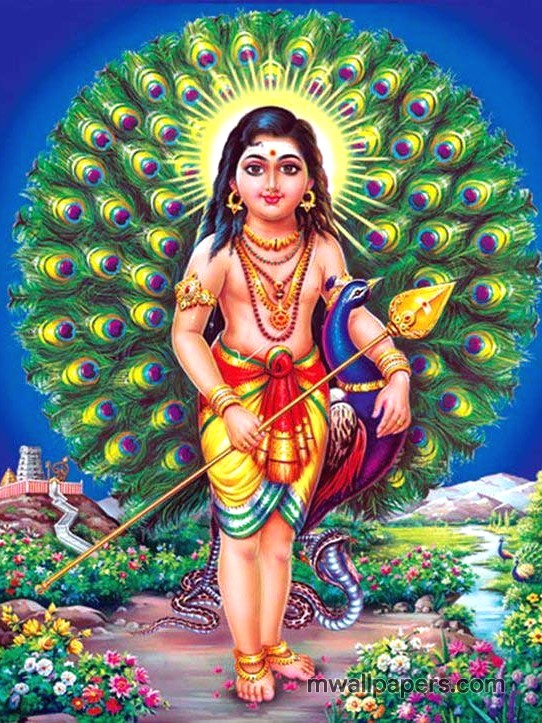Go to: Sun – Moon – Mercury – Venus – Jupiter – Saturn – Uranus – Neptune – Pluto
In this post, I have gathered important occult and astrological writings about Mars for easier personal reference and hopefully, this will be useful for some of my readers as well.
General occult and astrological information about Mars
Mars was known by ancients under the names of Ares, Tyr, and Nergal is believed to represent Mars; Mangala, Kartikeya, Skanda, Kumara, and Murugan are its names in India.
Mars is of a shiny, fiery, and sparkling appearance, and finishes his travel through the zodiac in around 321 days. His mean motion is 31 minutes and 27 seconds.
His day house is Aries and his night house is Scorpio. He has his exaltation in 28 degrees of Capricorn, he is in his fall in 28 degrees of Cancer, and he is in his detriment in Libra and Taurus.
Mars is retrograde for 28 days and when it’s retrograde at birth the native will have his energies turned inwards in the first part of his life. Martian qualities, such as competitiveness, ambition, anger, war-like qualities will be hard to express until the second part of life.
Mars is a masculine nocturnal planet that is hot and dry. It’s the lesser bad-luck planet, the greater one being Saturn, of course. It encourages people to compete and disagree with each other; he’s the initiator of war. Mars rules red, saffron, and yellow colors, and bitter, sharp, and spicy flavors.
His orb is seven degrees, he governs Tuesday and its first and eighth astrological hours. He governs the years of the youth as well as ages 41 to 56. The month March (Martius) is named after this god. Mars is responsible for the first house of astrology. When transiting Mars forms a strong aspect to natal planets, usually it speeds up matters ruled by them.
Mars governs all instruments of war, metal, and sharp tools. He rules occupations that require wearing uniforms. He rules sports and high-energy activities. He rules raw sexual passion.
Mars in mythology
In Greek mythology, Mars is not a prominent god.
He was known for his cruelty and numerous love affairs.
He was known as the spirit of battle and ruling the worst aspects of war.
However, he was a very important protective deity of the Roman empire, a nation proud to be involved in wars.
Under a military leader, Augustus Mars gained greater prominence, becoming his personal guardian deity as well.
He is told to be the father of Romulus and Remus, the ancient founders of Rome.
This war god is known as Murugan in South India and is worshiped also in Sri Lanka, Singapore, and Malaysia.
He was told to be born from the Pleiades star cluster according to Indian mythology.
He is a philosopher warrior who destroys evil in the form of the demon Taraka and teaches how to live a moral life.
Tamil people usually worship this deity no matter where they live. Three of the six most opulent and busiest Tamil temples are dedicated to this god.
In one of the most ancient texts of Tamil literature (Tolkappiyam) this god is called “the red one” and his name “Murukan” (or Murugan) means “the youth”. He is also called “the sovereign” and “the victorious”.
Mars in palmistry

Mars doesn’t rule any finger in palmistry but it rules two mounts.
The upper one is located near the percussion between the line of heart and head.
The lower one is located below the mount of Jupiter, at the start of the line of life.
The upper Mars gives passive courage, self-control, resignation, and strength of resistance against wrong.
The lower Mars give more energy, strength, active courage, martial spirit, and self-assertion; but if it’s overdeveloped, it can make the person aggressive and quarrelsome.
Mental characteristics of a person born under the rule of Mars
Mars gives invincible courage in war or any sort of confrontation. The person is confident and immovable in his stance; he’s argumentative, active, competitive, putting himself in dangerous or challenging situations, not being under anyone’s control. He will do all it takes not to lose.
His mind may be fickle, but he can be generous and disciplined.
If Mars is badly placed in a natal chart, this makes a person a vain talker who is without morals or modesty; he is dishonest, loves strife and bloodshed; he could be a thief and a murderer; he is unstable, passionate in the worst ways, rash, scandalous, ungrateful, treacherous and of an oppressive nature.
Physical characteristics of a person born under the rule of Mars
Mars usually gives a middle stature, a strong muscular body, slender waist, large bones, the body that tends to be lean more than overweight; ruddy complexion and curly hair, sharp hazel eyes, confident countenance. Usually, the person ruled by Mars has a scar or injury on the face, and also the eyes may be reddish.
When it’s oriental in the chart, it gives great courage, a reddish complexion, quite a tall body, and the body is hairy. When it’s occidental in a chart, it gives a ruddy complexion, less height, yellow hair, and the body is not hairy.
What Mars represents in astrology
Mars represents tyrants, conquerors, warriors, princes ruling by tyranny, and oppression. It represents people and things of war, alchemists, butchers, people working with metals, and sometimes metal tools like surgeons; it can also represent murderers, thieves, bakers, tailors, watch manufacturers, barbers, cooks, carpenters, and other people working with sharp objects.
It can represent strength, courage, things that are fully or partly burnt in horary astrology; it can also represent the male sex, wars, anger, aggressiveness, blood, impulsiveness, ambition, and martial arts.
Diseases and imbalances caused by Mars
Mars causes problems with bile, the left ear, high blood pressure, headaches, physical brain disorders, fevers, ring-worms, viruses, any hot sensation in the body, rash due to heat, pimples, blisters, wounds, burns, stones, scars, smallpox and shingles.
Plants, animals, places, and metals ruled by Mars
Herbs ruled by Mars
Herbs governed by this planet tend to be reddish, their leaves are pointed and sharp, of a burning taste, and they love to grow in dry places. Their effect is corrosive and penetrating, as well as hot. Here are some herbs ruled by this planet:
Nettle ♂ Thistle ♂ Restharrow ♂ Petty spurge ♂ White and red brambles ♂ Lingwort ♂ Onion ♂ Garlic ♂ Mustard ♂ Pepper ♂ Ginger ♂ Leek ♂ Tall whitetop ♂ White horehound ♂ Hemlock ♂ Red sandalwood ♂ Tamarind ♂ Raddish ♂
Animals ruled by Mars
Tiger ♂ Ostrich ♂ Horse ♂ Wolf ♂ Lion ♂ Bear ♂ Wild ass ♂ Shark ♂ Scorpion ♂ Worm ♂ Hawk ♂ Vulture ♂ Raven ♂ Crow ♂ Owl
Places ruled by Mars
Automobile repair shops ♂ Places where metal is used as a tool or material ♂ Places where fire is burnt ♂ Slaughter-houses ♂ Chimneys ♂ Places were bricks are burnt ♂ Factories ♂ War zones
Metals and stones ruled by Mars
Iron ♂ Antimony ♂ Arsenic ♂ Sulphur ♂ Clay earth pigment ♂ Loadstone ♂ Bloodstone ♂ Jasper ♂ Many-colored amethyst ♂ Mercury sulfide
Finally…
This is all the information I have for you about Mars. If you wish to share something more about this planet, please do so in the comments.
Go to: Sun – Moon – Mercury – Venus – Jupiter – Saturn – Uranus – Neptune – Pluto
References
- Mars – Ancient History Encyclopedia
- TheAstroCodex Mars Information
- Mars – Roman God – Encyclopedia Britannica
- Ares in Greek Mythology – Encyclopedia Britannica
- Retrograde Mars – The Astro Codex
- Kartikeya – Wikipedia
- Mangala – Wikipedia
- Christian Astrology by William Lilly
- Practical Astrology by St. Germain
- Everybody’s Guide to Palmistry by K. Das
- Palmistry, the Complete Jotidh Guide (Vedic palmistry) by Sanjay Bensaali
- Cheiro’s Language of the Hand
- Jataka Parijata, Vol I. (Vol II. is here)
- Astrology in Vedas by J. N. Bhasin
- Learn Astrology The Easy Way (Vedic) by Dr. Gauri Shankar Kapoor
- Textbook of Scientific Hindu Astrology II by Prof. P. S. Sastri



